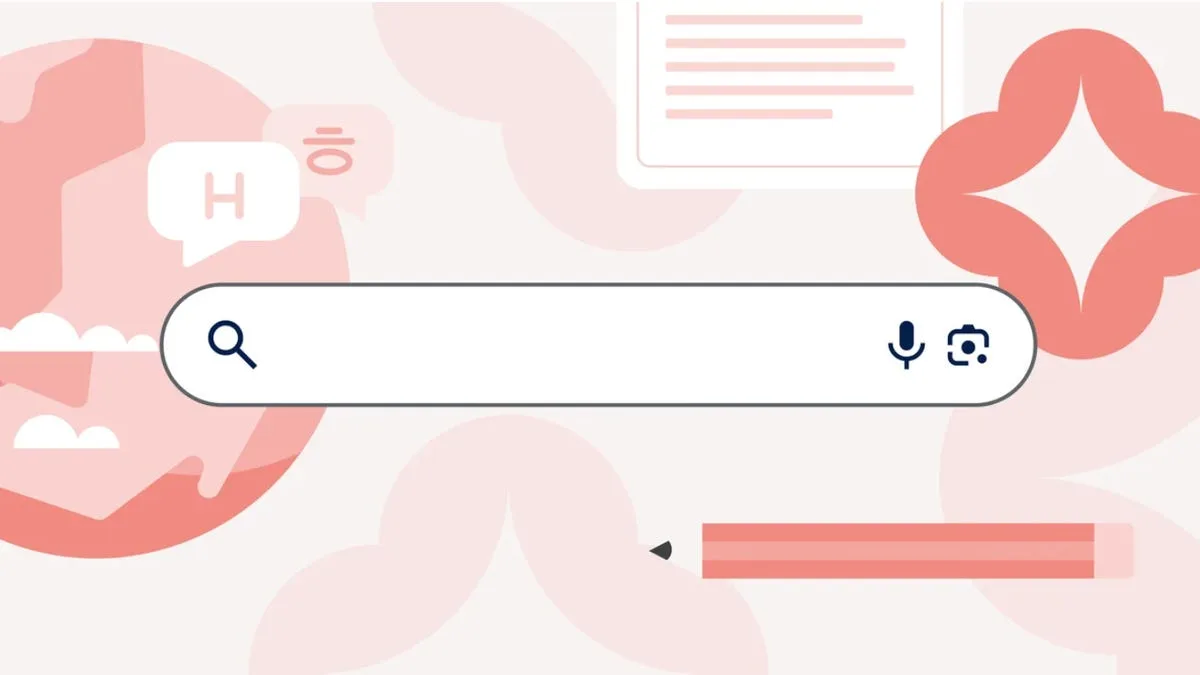Hey there! Have you ever thought about diving into the world of artificial intelligence? It’s kind of like opening a treasure chest filled with endless possibilities. Building an AI agent from scratch can not only be a fun and challenging project but also a fantastic way to boost your skills and creativity. Whether you’re a curious beginner or someone with a bit of coding experience under your belt, this is a topic that’s definitely worth exploring.
Now, I get it—AI can seem like this big, buzzing world of complex algorithms and data. But here’s the good news: anyone can start building an AI agent with the right guidance! With advancements in technology, it’s easier than ever to step into this arena. Imagine creating something that can help automate tasks, answer questions, or even hold a conversation. It’s like crafting your own digital assistant, and who wouldn’t want that?
Plus, this field is not just for the tech wizards in lab coats. With more industries leaning into AI for innovation, having skills in this area can make you stand out. Whether you want to impress your friends, enhance your career prospects, or just have some fun, learning how to build an AI agent from scratch could be your ticket to leveraging the future of tech. So, grab your laptop, and let’s get into it!
Understanding AI Agents
Building an AI agent from scratch starts with understanding what AI agents are. Simply put, an AI agent is a system capable of perceiving its environment and taking actions based on that information. Imagine a virtual personal assistant like Siri or Alexa; they interpret your commands, process them, and then act upon your requests. This foundational knowledge is vital as it sets the framework for developing your own AI agent.
Choosing the Right Programming Language
The next step in building an AI agent is selecting a programming language. Python is often favored due to its readability and extensive libraries dedicated to AI and machine learning, such as TensorFlow and PyTorch. However, languages like Java or C++ can also be used, particularly if performance is a critical factor. For beginners, Python can be a gentle introduction, making the journey less daunting. Finding the right language that fits your needs can greatly influence your project’s success.
Defining the Problem
Identifying the problem your AI agent will solve is crucial. Whether it’s a chatbot for easy customer service, a recommendation system for a website, or a game-playing agent, clarity on the problem will guide your decisions down the line. For example, if you want to create a virtual assistant, knowing its core functionalities—like setting reminders or playing music—will help shape your development approach. This focused vision serves as a compass throughout the building process.
Collecting and Preparing Data
Data is the lifeblood of any AI project. The effectiveness of your AI agent hinges on the quality and quantity of data it can learn from. Depending on your application, you might need to gather new data or curate existing datasets. After collecting the data, preprocessing it is critical; this involves cleaning, normalizing, and sometimes transforming the data into a useful format. Think of data preparation as setting the stage for a play—the better the stage is set, the more impressive the performance will be.
Developing the Learning Model
Now it’s time to get into the nitty-gritty of developing the AI model. This involves selecting algorithms and training the model using your dataset. If you’re building a chatbot, for instance, you could choose a neural network model that understands natural language. Experimenting with different algorithms will likely yield varying results, so be ready to iterate. Remember, building an AI agent is a creative process; don’t be afraid to try new approaches!
Testing and Evaluation
Once you have your model trained, it needs to be tested rigorously. This phase is vital as it helps determine the agent’s effectiveness and robustness. Use different metrics to evaluate its performance, such as accuracy, precision, and recall. Imagine struggling with a remote control; if it doesn’t respond properly, you’d quickly get frustrated. Your AI agent should likewise perform reliably to meet user expectations.
Fine-Tuning and Deployment
After evaluation, fine-tuning your model may be necessary. This could involve adjusting hyperparameters, adding more data, or even refining your algorithms. Once you’re happy with its performance, it’s time for deployment. Depending on your project, deployment might mean hosting the agent on a server or integrating it into a larger application. Getting your AI agent out into the real world is exhilarating; it’s the moment when your creation can truly shine.
Ongoing Learning and Updates
The journey doesn’t end at deployment. Continually monitoring the agent’s performance and updating it based on new data and user feedback will ensure it remains effective and relevant. AI is a rapidly evolving field, and staying updated with the latest technologies and techniques will be key to your agent’s long-term success. Think of it as nurturing a plant; consistent care and attention will help it grow stronger over time.
By breaking down the process into these digestible sections, you can effectively build your own AI agent from the ground up. Whether you’re a hobbyist or looking to create a more complex solution, each step offers valuable lessons and rewarding challenges.
Practical Advice for Building an AI Agent
Building an AI agent from scratch can be a rewarding experience, whether you’re a hobbyist, a student, or a professional looking to expand your skill set. Here are some actionable steps to guide you along the way:
1. Define the Purpose of Your AI Agent
Start by determining what problem your AI agent will solve. Will it assist with customer service, automate data entry, or provide recommendations? A clear goal will guide your design and functionality.
2. Choose the Right Tools and Frameworks
Select programming languages and frameworks that align with your project needs. Python is a popular choice due to its rich libraries for machine learning, like TensorFlow or PyTorch. Evaluate other tools that may fit your niche requirements, such as R for statistics or JavaScript for web integration.
3. Gather and Prepare Your Data
Quality data is crucial for training any AI model. Collect datasets that are relevant to your purpose. Clean and preprocess this data to ensure it’s in a usable format. This may involve removing duplicates, normalizing values, or converting text into numerical formats.
4. Develop the AI Model
Choose an approach that fits your project—whether that’s supervised learning, unsupervised learning, or reinforcement learning. For beginners, starting with supervised learning can be beneficial as it involves straightforward input-output relationships.
5. Train Your AI Agent
Use your prepared datasets to train the model. This is where the model learns from the data. Pay attention to the training duration and continuously evaluate performance using metrics like accuracy or loss. Don’t be afraid to tweak parameters to enhance results.
6. Test and Iterate
Once your model is trained, it’s time to put it to the test. Run it through various scenarios to identify weaknesses or areas for improvement. Gathering feedback—both from tests and real-world usage—will help you refine the AI agent further.
7. Deploy and Monitor Your AI Agent
After successful testing, deploy your AI agent in a real-world context. Make sure you have monitoring systems in place to track performance and gather user feedback for ongoing improvements. Regular updates will help keep your agent relevant and efficient.
Taking these steps will not only help you build a functional AI agent but also enhance your understanding of artificial intelligence concepts. It’s about learning through doing, so don’t hesitate to experiment and evolve your approach as you go along.
Unlocking Your Potential: Building an AI Agent from Scratch
Creating an AI agent from scratch is more than just a coding exercise; it’s a journey into the world of machine learning, data analysis, and cognitive computing. A compelling statistic from the World Economic Forum indicates that by 2025, 85 million jobs may be displaced by a shift in labor between humans and machines, yet 97 million new roles could emerge. This dichotomy emphasizes the importance of understanding AI and its capabilities. By building your own AI agent, you not only gain valuable skills but also position yourself to adapt in a rapidly changing job market.
When delving into the mechanics of AI agent development, you might encounter numerous foundational concepts. First, consider the realm of machine learning algorithms. According to research from McKinsey, organizations that invest in AI see a 20% to 25% increase in productivity. Understanding the difference between supervised and unsupervised learning is crucial; supervised learning requires labeled datasets for training, while unsupervised learning finds patterns in untagged data. This distinction could significantly influence the design and functionality of your AI agent. A basic recommendation is to start with a simple project, such as a chatbot, which allows you to experiment with Natural Language Processing (NLP) and machine learning without requiring extensive resources.
Expert opinions can greatly enhance your understanding. Dr. Fei-Fei Li, co-director of the Stanford Human-Centered AI Institute, emphasizes the importance of ethical considerations in AI development. She suggests asking yourself, “What social good does your AI agent achieve?” This question not only guides you in the right direction but also provides a framework for ensuring that your AI works for the benefit of society. Incorporating ethical AI practices can also make your project more appealing to potential collaborators or employers who prioritize responsible AI development.
Moreover, as you build your AI agent, take the time to engage with relevant online communities. Forums like GitHub and Stack Overflow are treasure troves of information where you can find countless discussions on common challenges. For instance, you might wonder how to integrate various APIs to enhance your AI agent’s capabilities. Did you know that according to a survey by Stack Overflow, 74% of developers turn to their peers for coding support? Engaging with these communities not only provides immediate problem-solving but also allows you to stay updated on the latest developments in AI technologies.
Lastly, it’s beneficial to understand some lesser-known tools that can help you. For instance, OpenAI’s Gym is a great resource for developing and testing reinforcement learning algorithms. This tool provides an environment where your AI can learn from trial and error, and it’s especially useful for projects involving complex decision-making. Many novice developers may overlook the power of using libraries like TensorFlow and PyTorch, which streamline the development process with pre-built models and frameworks. Before diving in, exploring these resources can give you a solid foundation and save you a significant amount of time.
As we wrap up our journey on how to build an AI agent from scratch, it’s clear that the process is both exciting and rewarding. We’ve explored the foundational concepts, from understanding the basic architecture of AI to implementing machine learning techniques. Each step not only helps you develop technical skills but also empowers you to think critically about problem-solving in the digital world.
Remember, building an AI agent isn’t just about coding and algorithms; it’s also about creativity and asking the right questions. Each choice you make, from the data you use to the functionalities you implement, shapes the final outcome of your AI project. Stay curious and keep experimenting—after all, even the most advanced AI systems started from simple ideas and concepts!
As you move forward, don’t hesitate to share your progress and challenges. Engaging with communities and discussions is a fantastic way to learn and grow. So, whether you’re just getting started or refining your skills, take pride in your journey. Reflect on what you’ve learned, share your thoughts in the comments, or spread the knowledge with friends.
Building an AI agent from scratch can unlock your potential—in ways you may not even realize yet. So go ahead, take that next step, and who knows? You might just create something extraordinary!







